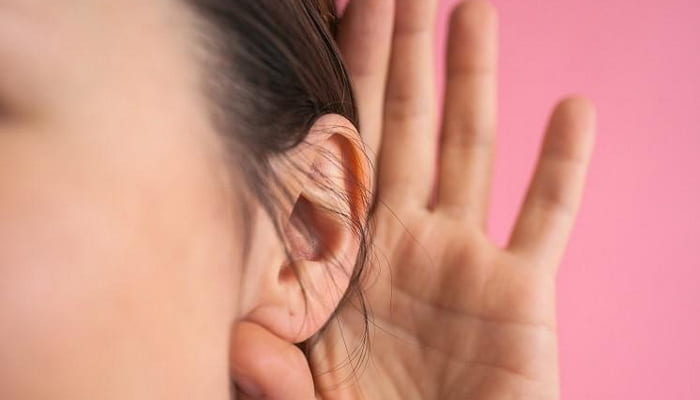Зміст
Tinnitus is any sound that we hear, but which is objectively absent. It may resemble the sound of the sea, the tuning of an old radio, or other crackling and creaking sounds. This may happen all the time or only in certain situations. It doesn’t cause pain, but it makes it difficult to concentrate. In quiet, it is more intense, so it can cause problems falling asleep and staying asleep. Tinnitus is not a disease, but a condition with a high degree of discomfort.
Tinnitus is a fatiguing acoustic condition that occurs in the absence of other external sound stimuli. A person suffering from this disease hears constant sounds that they describe as buzzing, pulsating or ringing.
Tinnitus – causes
The sound wave entering the ear canal from the outside reaches the eardrum and stimulates the small bones behind it (hammer, incus, stirrup). These are the elements of the middle ear that transmit vibrations into a space filled with fluid and filled with thousands of cilia-shaped cells (the so-called cochlea). The cilia pick up vibrations in the fluid and transmit them as electrical impulses through the auditory nerve to the brain, which in turn converts them into sounds. If the cilia are damaged or not working properly, electrical impulses are continuously sent to the brain, despite the absence of any external sound stimuli. The causes of hair cell dysfunction can vary.
Dysfunction can occur, for example, as a result of infection of the middle or inner ear, loud noise, various medications, abnormal blood pressure values, autoimmune diseases or Meniere’s disease. Tinnitus also occurs with certain medical conditions, such as diabetes, thyroid problems, atherosclerosis, strokes and brain tumors, as well as improper functioning of the ossicular chain, such as after a head injury, says an otolaryngology.
Tinnitus and degenerative joint changes
Tinnitus can sometimes be caused by diseases resulting from degeneration of the cervical spine, and can also accompany dysfunction of the temporomandibular joint. The connection between these diseases is not fully explained, but rehabilitation can be effective.
Treatment for tinnitus
Treatment of tinnitus involves diagnosing and eliminating its cause pharmacologically or, if necessary, surgically. Medicines are also used to improve blood flow to the inner ear and reduce mental stress. Therapy for accustoming the patient to tinnitus also works well, which uses a device that generates broadband noise – a generator that emits so-called White noise. White noise should be worn behind the ear for at least eight hours a day. Noise of appropriate intensity causes the subcortical hearing centers to get used to disturbing sounds and not perceive them consciously. However, this is a rather slow process.
One method is to use a hearing aid for a certain period of time. In some cases, tinnitus goes away even after you stop using hearing aids, says a specialist.
Tinnitus – maintenance treatment
Home treatment for tinnitus mainly involves trying to eliminate the causes of tinnitus. If symptoms are caused by blood pressure that is too high, a proper diet that reduces salt intake is necessary. In some situations, treatment may require limiting the use of certain medications, such as high doses of aspirin. People taking it regularly should consult their doctor about reducing their dose or switching to another drug. Overstimulation of auditory receptors can also be caused by various types of stimulant substances. To avoid common tinnitus or reduce the discomfort, you should limit your caffeine intake and avoid other stimulants, mainly cigarettes.
Moderate, regular exercise has also been shown to reduce the intensity of tinnitus, as well as the stress associated with it. It is also advisable to try to drown out the noise with other, more pleasant sounds. “You should listen to soft music or the low hum of a radio before bed,” he adds.
Tinnitus and dizziness
Tinnitus combined with dizziness may be a symptom of Meniere’s disease. Symptoms appear suddenly and are characterized by a feeling of fullness, tinnitus and dizziness, accompanied by nausea and difficulty maintaining balance. The disease affects the labyrinth, located in the inner ear. This causes excessive endolymph filling and a local increase in pressure. Therapy involves the use of dehydrators, antihistamines, and sedatives and the introduction of a healthy diet without excess salt, caffeine, and alcohol. In some cases, surgery is necessary to cut the vestibular nerve or drain the endolymphatic sac.








